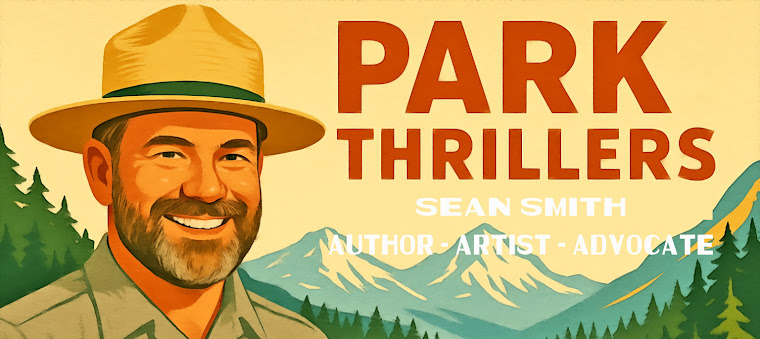 |
| Nico van der Merwe |
What is a
good writer to do given technology’s game changing nature?
While my
novels wouldn’t fall within the international spy genre, there are aspects of
my thrillers that overlap with these stories.
Here’s what I have done to deal with the rapidly changing technology
universe.
First, I’ve
put my characters in places where technology doesn’t work. In my first novel, Unleashing Colter’s
Hell, the story takes place in Yellowstone National Park. While
Yellowstone’s cell coverage is “improving” there are many places in the park
which are and will remain cell dead spots.
This lack of technology access levels the playing field for both hero
and scoundrel. Minimizing any advantage either may have. In addition, while
technology can be strength and used for evil, Unleashing Colter’s Hell reveals
that relying too much on technology can be an Achilles heel.
Mr. Cumming
rightly points out that historic spy thrillers relied heavily on the undercover
spy to move the plot. Agents like James Bond easily moved in and out of
countries, changing personas like he changed tuxedos. This ease of movement, allows the hero to
always be one step ahead of the bad guys. But today, it would be nearly
impossible for Bond or his adversaries for that matter; to do this given anyone
with a laptop and Wi-Fi access can check out a backstory. This fact may mark
the end of the “secret” agent, who flies in on a moment’s notice, infiltrates
the enemy organization through deception and witty banter. He flies out undetected once he finds his prize often with the girl in tow. More and more, this type of
operation goes to special forces’ units like the Delta force and Seal teams,
who rely more on speed and firepower to retrieve the prize.
Yet, secret
identities are still an important plot device. But unlike the past, they must
be built and maintained over a much longer time period. In Unleashing Colter’s
Hell and my new novel Lost Cause, the villains have crafted their alter egos
over decades rather than a few days.
They have spent years building a public profile that can easily pass all
but the most intensive background check.
This
long-term covert operation is far more chilling, than the “fly-in” undercover
operation, because it assumes several things. First, extensive planning to
launch the operation was carried out by the spy. Extensive planning requires
thought and calculation, as well as, resources and organization that the spy of
old may not have had. More planning, gives the villain a greater possibility
for success. Long-time frames also allow
authors to invent crimes with greater pay offs, far reaching ramifications, and
unprecedented mayhem. Yet, even more sinister is the fact that an indefinite
undercover operation requires the villain to develop deep conviction, patients,
and discipline in order to achieve his/her goal. These facts make for great
story devices upon which to hang the plot. The villain is truly committed to
the cause.
But
technology isn’t all bad. My characters often use technology in ways to push
the drama along. For example, the thriller Lost Cause centers on a relic that
once belonged to Confederate General Robert E. Lee. The relic is believed to be
the source of the General’s power and would give the finder the power to launch
the next Civil War. A domestic terrorist group races across America unleashing
terror and murder in a desperate hunt to find the item. Park Ranger Grayson
Cole is ordered to stop them. Both villain and hero alike use phones,
computers, and online search engines to uncover information that leads them to
their ultimate goal. This information
retrieval would have taken weeks, if not months to discover even just a few
decades ago. Obviously, nearly instantaneous access to the world’s collective
knowledge can have extreme benefits to the thriller story teller.
So, does
modern technology kill the thriller? It doesn’t have to. Rather, like the opening of the 1970’s TV
show the Six Million Dollar Man, technology gives authors the ability to write
thrillers that a better, faster, stronger.


